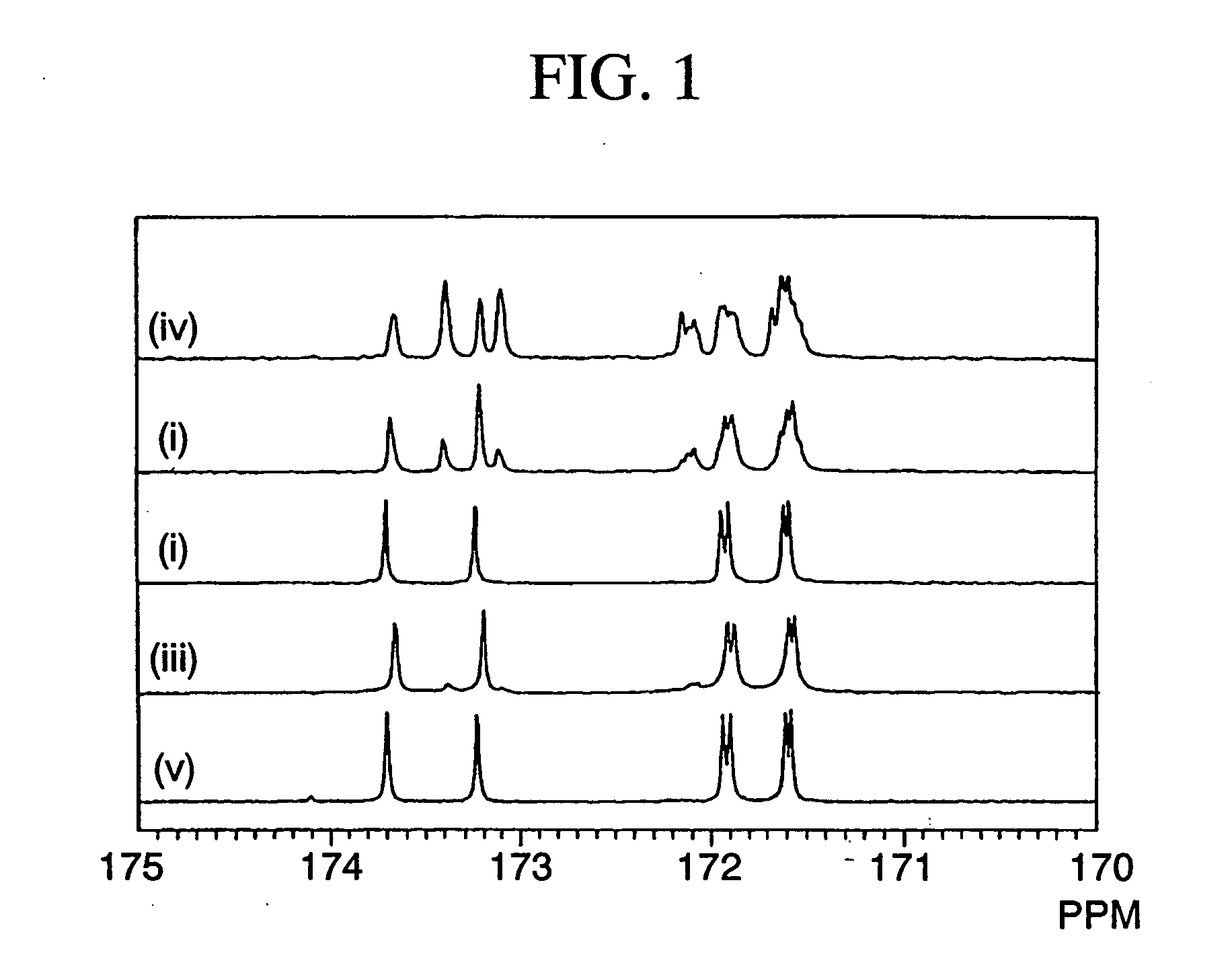Modifier for polylactic acid and polylactic acid composition containing the modifier
a technology of polylactic acid and modifier, which is applied in the field of modifiers, can solve the problems of affecting the affecting the tensile strain, and affecting the tensile strain, and achieves the effects of enhancing flexibility, tensile strain, and biodegradability of polylactic acids
- Summary
- Abstract
- Description
- Claims
- Application Information
AI Technical Summary
Benefits of technology
Problems solved by technology
Method used
Image
Examples
reference example 1
Synthesis Example of a Polymer (A-1)
[0103] Into a reactor with a volume of 10 L, equipped with a stirrer, a rectifier, and a gas inlet tube, succinic acid (hereinafter, referred to as “5 uA”) and propylene glycol (hereinafter, referred to as “PG”) in an amount of 1.3 mole equivalents with respect to 5 uA were charged. The mixture was heated and stirred under a nitrogen stream while the temperature thereof was increased from 150° C. at a rate of 7° C. / hour. While produced water was being removed, the mixture was heated to 220° C. After two hours, titanium tetrabutoxide, in an amount of 0.006%, as an esterification catalyst, was added thereto. Under reduced pressure of 0.1 KPa, the mixture was stirred for 8 hours, thus producing a polymer (A-1) which was liquid at 20° C.
reference example 2
Synthesis Example of a Polymer (A-2)
[0104] Into a reactor with a volume of 10 L, equipped with a stirrer, a rectifier, and a gas inlet tube, 5 uA and ethylene glycol (hereinafter, referred to as “EG”) in an amount of 1.3 mole equivalents with respect to 5 uA were charged. The mixture was heated and stirred under a nitrogen stream while the temperature thereof was increased from 150° C. at a rate of 7° C. / hour. While produced water was being removed, the mixture was heated to 220° C. After two hours, tributyl tin oxide, in an amount of 0.005%, as an esterification catalyst, was added thereto. Under reduced pressure of 0.1 KPa, the mixture was stirred for 2 hours.
[0105] Toluene was added to the obtained reaction mixture to form a 20% solution, and hexamethylene diisocyanate (hereinafter, referred to as “HMDI”), in an amount of 0.05% with respect to the polyester, was added thereto. In addition, tin octanoate, in an amount of 0.01% with respect to the polyester, was added thereto, an...
reference example 3
Synthesis Example of a Polymer (A-3)
[0106] Into a reactor with a volume of 50 L, equipped with a stirrer, a rectifier, and a gas inlet tube, adipic acid (hereinafter, referred to as “AA”) and propylene glycol (hereinafter, referred to as “PG”) in an amount of 1.4 mole equivalents with respect to AA were charged. The mixture was heated and stirred under a nitrogen stream while the temperature thereof was increased from 150° C. at a rate of 10° C. / hour. While produced water was being removed, the mixture was heated to 220° C. After two hours, titanium tetrabutoxide, in an amount of 0.013%, as an esterification catalyst, was added thereto. Under reduced pressure of 0.1 KPa, the mixture was stirred for 8 hours. Subsequently, the mixture was naturally cooled, thus producing a polymer (A-3) which was liquid at 20° C.
PUM
| Property | Measurement | Unit |
|---|---|---|
| Temperature | aaaaa | aaaaa |
| Temperature | aaaaa | aaaaa |
| Percent by mass | aaaaa | aaaaa |
Abstract
Description
Claims
Application Information
 Login to View More
Login to View More - R&D
- Intellectual Property
- Life Sciences
- Materials
- Tech Scout
- Unparalleled Data Quality
- Higher Quality Content
- 60% Fewer Hallucinations
Browse by: Latest US Patents, China's latest patents, Technical Efficacy Thesaurus, Application Domain, Technology Topic, Popular Technical Reports.
© 2025 PatSnap. All rights reserved.Legal|Privacy policy|Modern Slavery Act Transparency Statement|Sitemap|About US| Contact US: help@patsnap.com

